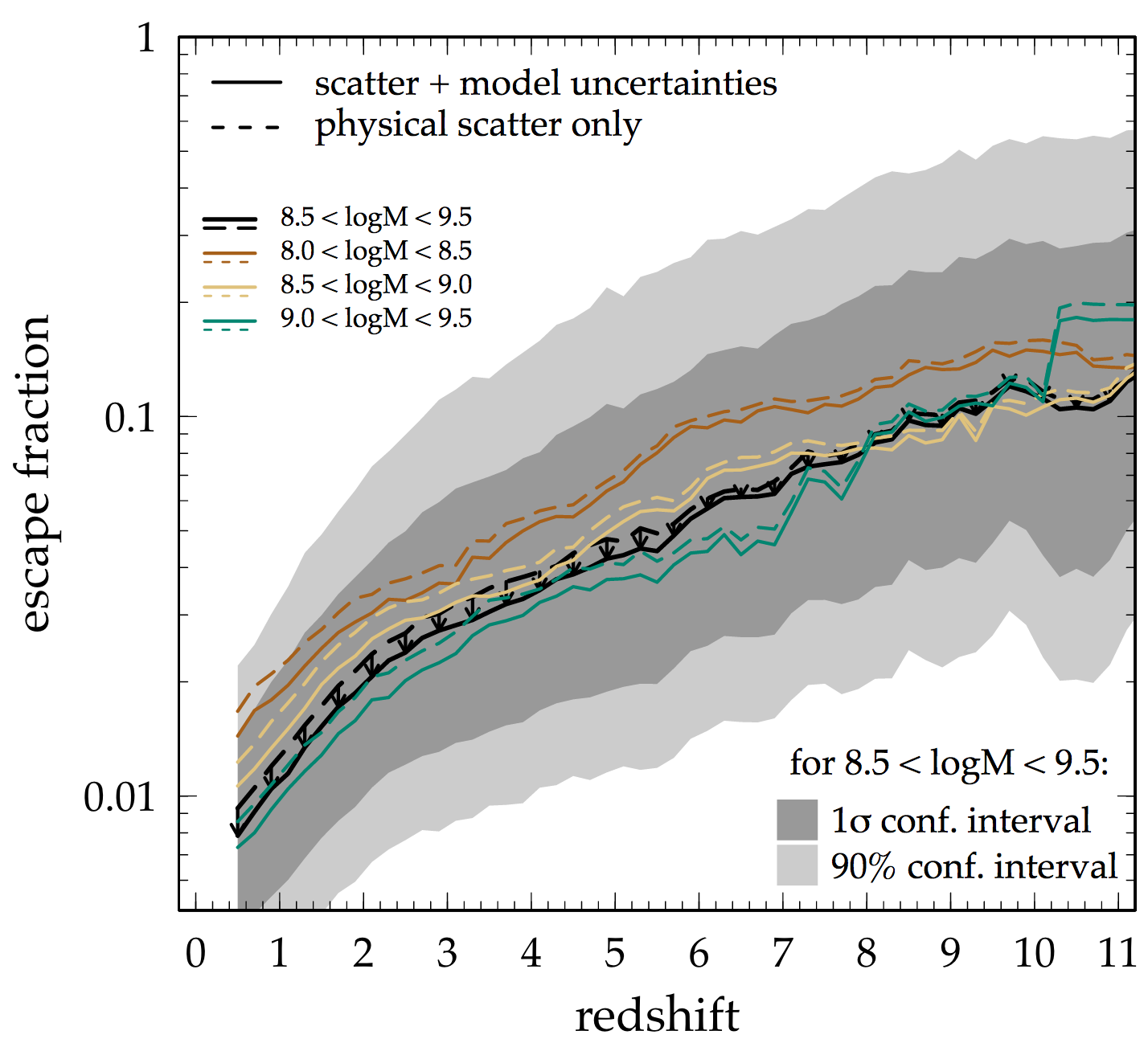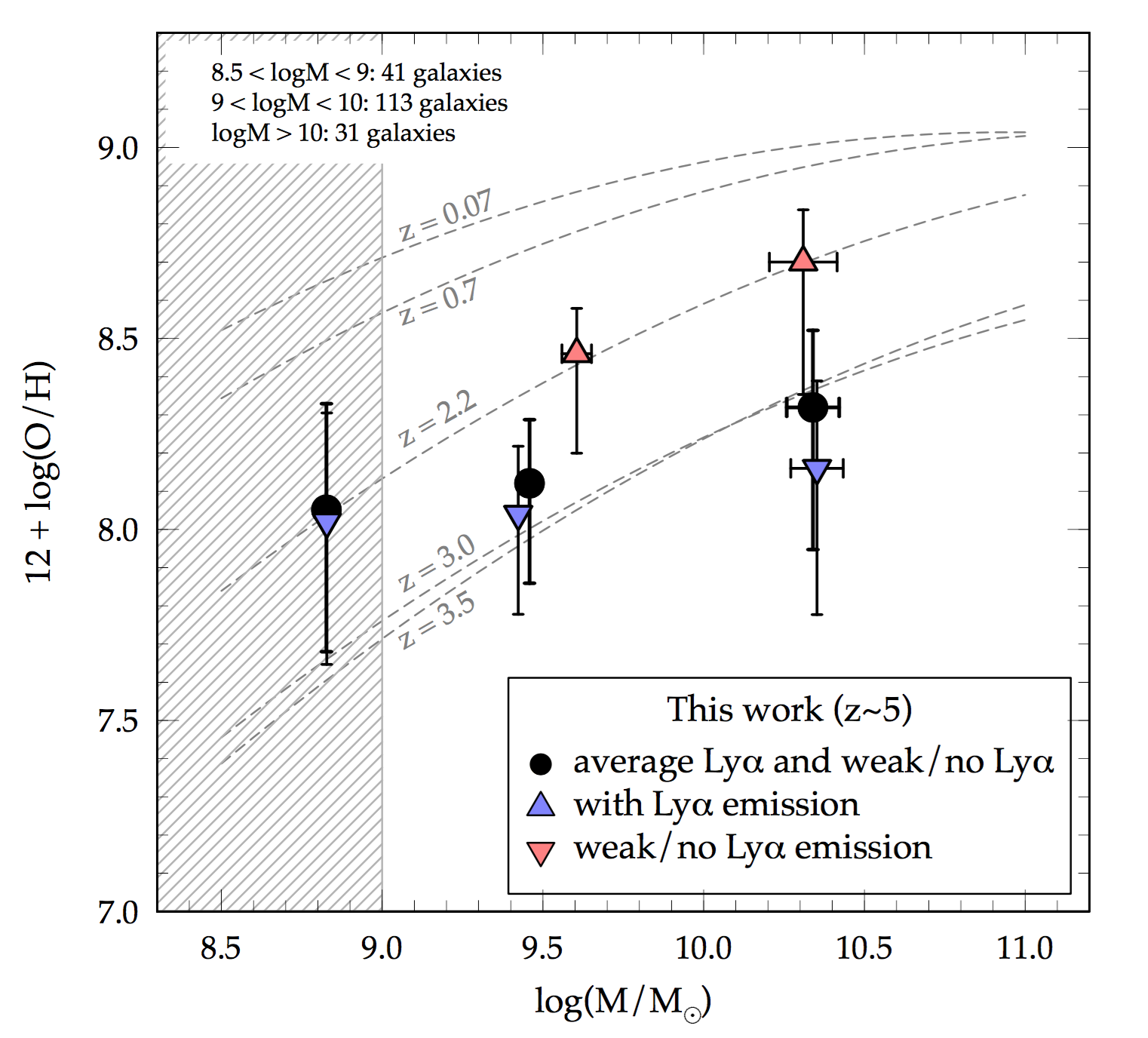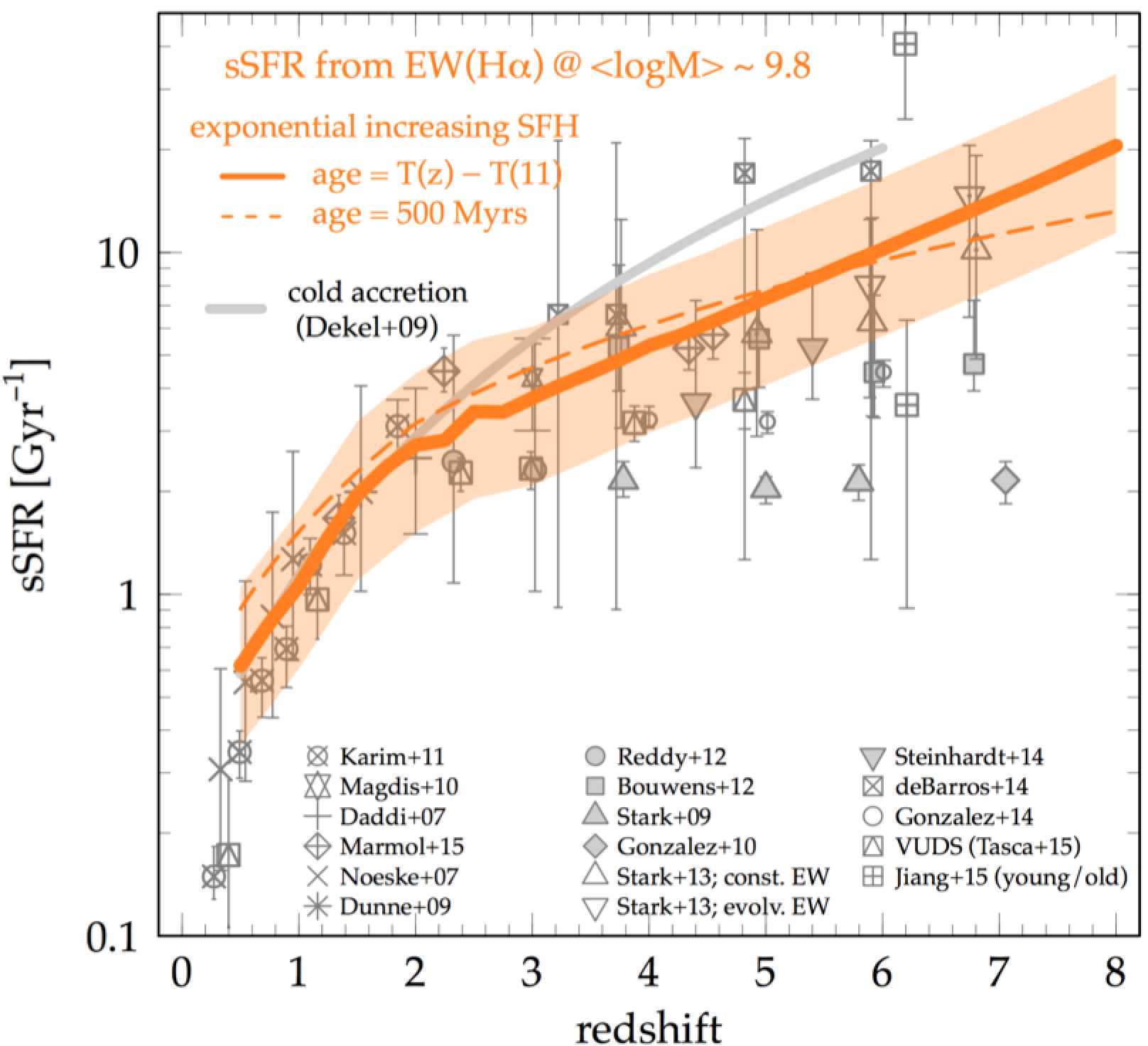
Are galaxies capable of reionizing the universe during the Epoch of Reionization? The escape fraction of ionizing continuum is an important number to answer this questions. However, there is no direct measurement of the escape fraction for these galaxies.
Instead, we use local high redshift analogs (local galaxies that resemble high-z galaxies in their physical nature) to predict the escape fraction of galaxies 12 billion years in the past. We find that the escape fraction is just enough to reionize the universe.

The relatively tigh mass-metallicity (MR) relation at low redshifts is set up by the balance of star formation, gas outflow through feedback, and gas inflow of prestine gas. The MR relation is likely to change at early cosmic times because of the much faster and more stochastic growth of galaxies. Unfortunately, metallicities cannot be measured directly for the earliest galaxies until JWST is up.
For the first time, we measure metallicity indirectly from UV absorption features for a large sample of galaxies at z=5, 12 billion years in the past. Its very weak dependence on stellar mass verifies the fast growth of these galaxies, likely by mergers and strong gas accretion.

Galaxies at intermediate redshifts (6 billion years ago) are kown to show increase star formation activity compare to today's galaxies. Does this trend increase at even earlier times? We have consistently measured the specific star formation rate (sSFR, a measure for the mass-doubling time) from the Hα emission line for galaxies living 500 million years after the Big Bang. We find that they are doubling their masses within 100-200 million years with galaxy mergers being an important contribution to galaxy growth.